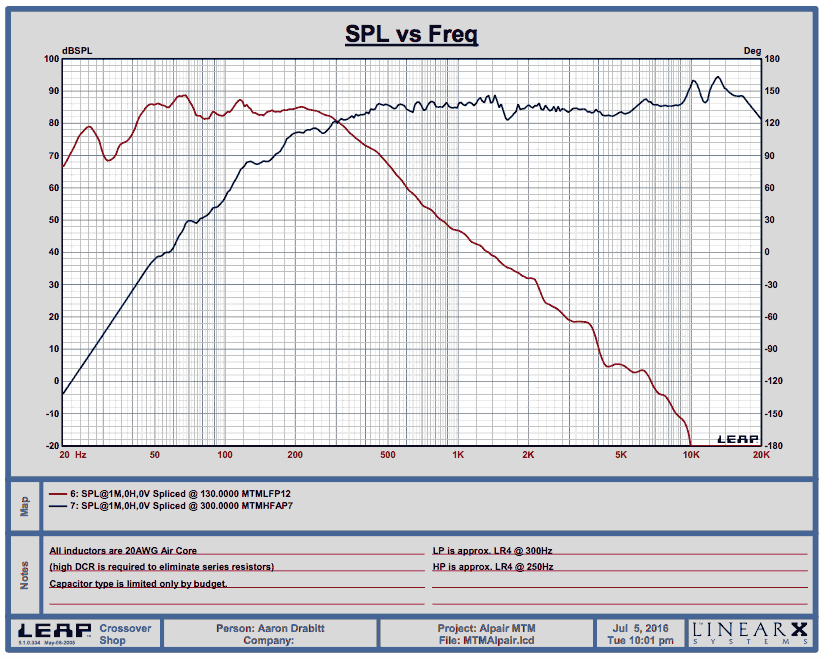Thankfully, a large supply of devices from many companies made this treat a mute topic. We have to go out of our way to find current devices that have high distortion.
I'm thinking for a two way design, the 700-7khz range is hard to avoid. Your own two way speakers cross @circa 900hz don't they? I honestly thought that we'd be good even up to 1khz given where vocal/instrument frequencies/harmonics fall. It would seem obvious that a poorly implemented crossover will be quite "noticeable". One that is well done, with regard to the drivers timbre mix, shouldn't be a problem. Should your statement be regarded as more of a "guideline" rather than the "hard rule" it sounded like?I can't account for anyone's individual tastes, but in the mean, people like Toole have shown what matters and why. To me crossovers in the critical 700 - 7kHz region are to be avoided at all costs and the system has to be constant directivity.
First Page of Chapter 8 in 2nd Edition of Sound Reproduction
"In assessing the factors contributing to subjective judgments of sound
quality, discussed in Section 5.7, it was shown that about 30% of the overall
rating is contributed by factors related to low-frequency performance
(Olive, 2004a, 2004b)."
Hi fluid, thx.
Well 30% isn't 'way more than 20%' like i said, but it's dang close to being 1/3 of the overall evaluation, and surely can't be marginalized.
For me, there is no particular range more important than any other.
for me it's about achieving the most integrated full 10 octaves sound possible.
Yea, we disagree a lot.I know my post is just a list of disagreements.
I suppose that one man's guideline could be another man's rule. The later summa, the NS-15 had a LP filter on the woofer at about 700 Hz, but it had a slightly rising response about there. The waveguide went down to likely 800 Hz. These are active designs. I'd have liked to go lower, but it gets too costly in terms of size/cost for questionable benefit. The waveguides over at ATH should easily handle a 500-600 Hz crossover - even with a 1" driver (for home use.) "Hard and Fast" rule!? I just think that it is the best option.I'm thinking for a two way design, the 700-7khz range is hard to avoid. Your own two way speakers cross @circa 900hz don't they? I honestly thought that we'd be good even up to 1khz given where vocal/instrument frequencies/harmonics fall. It would seem obvious that a poorly implemented crossover will be quite "noticeable". One that is well done, with regard to the drivers timbre mix, shouldn't be a problem. Should your statement be regarded as more of a "guideline" rather than the "hard rule" it sounded like?
First Page of Chapter 8 in 2nd Edition of Sound Reproduction
"In assessing the factors contributing to subjective judgments of sound
quality, discussed in Section 5.7, it was shown that about 30% of the overall
rating is contributed by factors related to low-frequency performance
(Olive, 2004a, 2004b)."
What was "low-frequency"? Less than 100 Hz? 200? I am saying that the extreme low end in a speaker is not that big a deal. How the LFs get handled in the room - that's everything.
The reference in that quote is for Sean Olive's research that resulted in the predictive model.What was "low-frequency"? Less than 100 Hz? 200? I am saying that the extreme low end in a speaker is not that big a deal. How the LFs get handled in the room - that's everything.
Chapter 20 in Floyd's 2nd edition book
"Then there are two statistics that separately focus on low-frequency performance:
■ LFX: low-frequency extension (Hz), the 6 dB down point relative to
listening window (LW) sensitivity in the range 300 Hz to 10 kHz.
■ LFQ: absolute average deviation (dB) in bass frequency response from
LFX to 300 Hz."
In the evaluation of 70 speakers of different types
■ Low-bass extension (LFX): 30.5%
Gives the 30 percent value but only extension being a factor.
The other two factors that dominated would also have an impact on bass but not alone
■ Narrow-band and overall smoothness in the on and off-axis
response: 38%
— NBD_PIR (20.5%) + SM_PIR (17.5%)
— Since PIR incorporates on-axis, early-reflection, and sound power
curves it is evident that all three must exhibit narrow and broadband
smoothness.
■ Narrow-band smoothness in on-axis frequency response
(NBD_ON): 31.5%
So if the bass was extended but lumpy then it would increase LFX but have a negative effect on Narrow band deviations and the smoothness of the predicted in room result.
All the factors listed are based on anechoic data, so how the bass is handled in room isn't a factor in that model even though it may have been a factor in the scores that the listeners gave to the speakers in the blind testing.
I don't think anything Earl has said contradicts this.
Last edited:
I'm thinking for a two way design, the 700-7khz range is hard to avoid.
I have at least 3 2-ways here that XO below 700Hz.
They might not be to your taste but they have been well liked by those that hear them.
dave
Dave, those are 3-way .. no? (looking at those side mounted woofers next to the MTM)
Last edited:
2-way. XO at 250 Hz.
Woofers not on. But that is how you would make a 3-way. Add bass suport below 50Hz or so.
dave
Woofers not on. But that is how you would make a 3-way. Add bass suport below 50Hz or so.
dave
I don't really know what you guys are talking here, but 15" woofer has much lower THD than 6.5" at 250Hz or below, and I can clearly hear the difference.
6.5" has much higher 2nd and 3rd harmonics, so it sounds obviously more boomy when I match the frequency response of those 2 woofers...
6.5" has much higher 2nd and 3rd harmonics, so it sounds obviously more boomy when I match the frequency response of those 2 woofers...
Well that’s I’m inferring. Earle is saying “distortion doesn’t matter”
Well of course it doesn’t matter when you’re already using large 10-15” woofers.
I don’t think he has any products with 3-4” drivers; which are the most popular in the marketplace.
If you are using small drivers (8” or less; in my book) then you I definitely need to pay attention to power handling, excursion and distortion.
Well of course it doesn’t matter when you’re already using large 10-15” woofers.
I don’t think he has any products with 3-4” drivers; which are the most popular in the marketplace.
If you are using small drivers (8” or less; in my book) then you I definitely need to pay attention to power handling, excursion and distortion.
When we play something like 808 kick (60Hz or so sine wave) which is very popular among today's trap based pop music, what we really hear from 6.5 woofer is 120Hz harmonics that makes the impression of the music a lot different. Those songs are obviously produced to be compatible with both night club (15") and home listening (6.5"), so I don't think it is a bad thing by itself, but we can't deny the difference, I guess.
Last edited:
As far as I am concerned that is not what Earl is saying. In the research he performed low order THD was not at all correlated to perceived sound quality and large amounts of low order THD could not be distinguished.Well that’s I’m inferring. Earle is saying “distortion doesn’t matter”
Well of course it doesn’t matter when you’re already using large 10-15” woofers.
I don’t think he has any products with 3-4” drivers; which are the most popular in the marketplace.
If you are using small drivers (8” or less; in my book) then you I definitely need to pay attention to power handling, excursion and distortion.
If any speakers are used within reasonable design limits, the distortion they put out should not exceed those thresholds. It is a bad speaker or one pushed far beyond it's intended use that would get there so of course power handling and SPL capability are important, nothing Earl says suggests otherwise, he even explicitly said it a few posts ago.
When you can hear a difference between two things and can see a difference in a measurement you have to be careful of assuming that the difference you heard came from the difference in that measurement.
Without proper blind perception testing it is quite easy to draw inaccurate conclusions.
>When you can hear a difference between two things and can see a difference in a measurement you have to be careful of assuming that the difference you heard came from the difference in that measurement.
This is so true. I have no proof that THD and what I hear have any kind of correlation. It can be something else.
This is so true. I have no proof that THD and what I hear have any kind of correlation. It can be something else.
As far as I am concerned that is not what Earl is saying. In the research he performed low order THD was not at all correlated to perceived sound quality and large amounts of low order THD could not be distinguished.
If any speakers are used within reasonable design limits, the distortion they put out should not exceed those thresholds. It is a bad speaker or one pushed far beyond it's intended use that would get there so of course power handling and SPL capability are important, nothing Earl says suggests otherwise, he even explicitly said it a few posts ago.
When you can hear a difference between two things and can see a difference in a measurement you have to be careful of assuming that the difference you heard came from the difference in that measurement.
Without proper blind perception testing it is quite easy to draw inaccurate conclusions.
Agreed, that’s my takeaway too. Non-linear distortions are even less of a problem, in the study, leaving only the linear distortions to tackle before they breach the threshold of audibility - which is handy, because those are the ones which are more predictable and able to be tackled in the design stage (if you have the resources of time, budget, etc).
- Home
- Loudspeakers
- Multi-Way
- Geddes on Distortion perception

